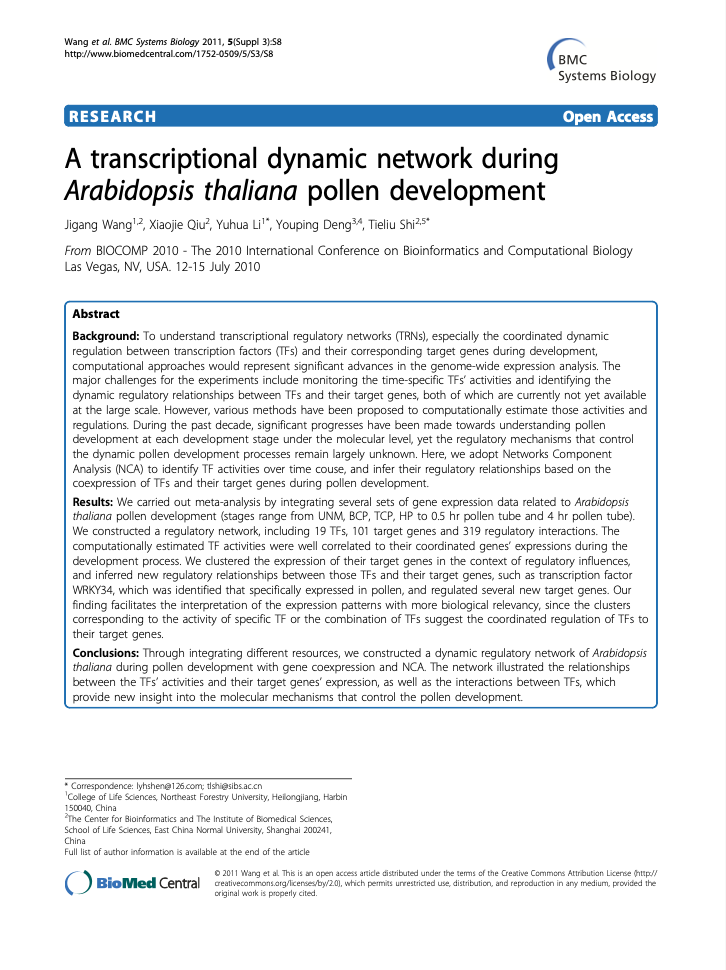
A transcriptional dynamic network during Arabidopsis thaliana pollen development
To understand transcriptional regulatory networks (TRNs), especially the coordinated dynamic regulation between transcription factors (TFs) and their corresponding target genes during development, computational approaches would represent significant advances in the genome-wide expression analysis. The major challenges for the experiments include monitoring the time-specific TFs' activities and identifying the dynamic regulatory relationships between TFs and their target genes, both of which are currently not yet available at the large scale. However, various methods have been proposed to computationally estimate those activities and regulations. During the past decade, significant progresses have been made towards understanding pollen development at each development stage under the molecular level, yet the regulatory mechanisms that control the dynamic pollen development processes remain largely unknown. Here, we adopt Networks Component Analysis (NCA) to identify TF activities over time couse, and infer their regulatory relationships based on the coexpression of TFs and their target genes during pollen development.
We carried out meta-analysis by integrating several sets of gene expression data related to Arabidopsis thaliana pollen development (stages range from UNM, BCP, TCP, HP to 0.5 hr pollen tube and 4 hr pollen tube). We constructed a regulatory network, including 19 TFs, 101 target genes and 319 regulatory interactions. The computationally estimated TF activities were well correlated to their coordinated genes' expressions during the development process. We clustered the expression of their target genes in the context of regulatory influences, and inferred new regulatory relationships between those TFs and their target genes, such as transcription factor WRKY34, which was identified that specifically expressed in pollen, and regulated several new target genes. Our finding facilitates the interpretation of the expression patterns with more biological relevancy, since the clusters corresponding to the activity of specific TF or the combination of TFs suggest the coordinated regulation of TFs to their target genes.
Through integrating different resources, we constructed a dynamic regulatory network of Arabidopsis thaliana during pollen development with gene coexpression and NCA. The network illustrated the relationships between the TFs' activities and their target genes' expression, as well as the interactions between TFs, which provide new insight into the molecular mechanisms that control the pollen development.